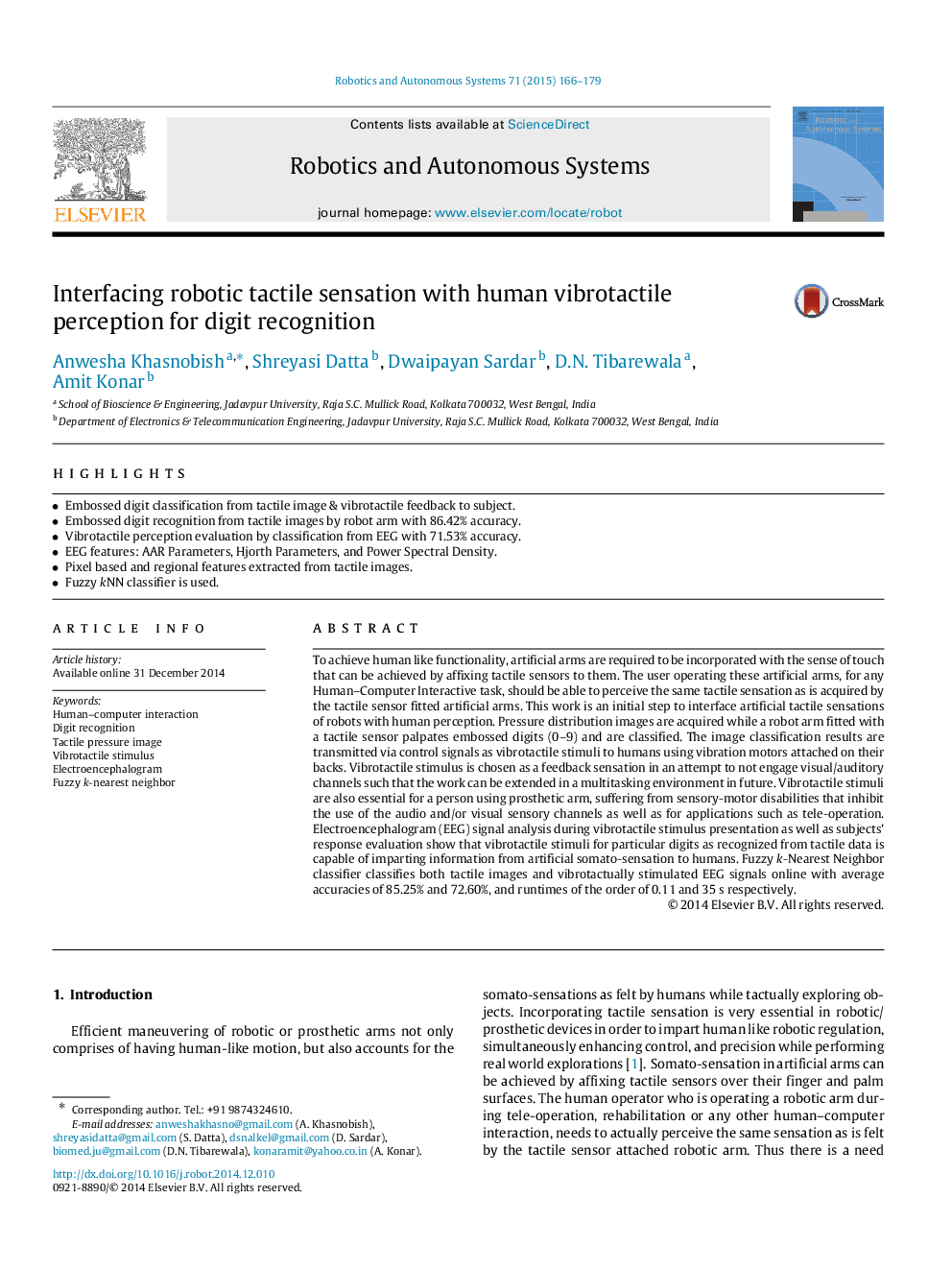| Article ID | Journal | Published Year | Pages | File Type |
|---|---|---|---|---|
| 413361 | Robotics and Autonomous Systems | 2015 | 14 Pages |
•Embossed digit classification from tactile image & vibrotactile feedback to subject.•Embossed digit recognition from tactile images by robot arm with 86.42% accuracy.•Vibrotactile perception evaluation by classification from EEG with 71.53% accuracy.•EEG features: AAR Parameters, Hjorth Parameters, and Power Spectral Density.•Pixel based and regional features extracted from tactile images.•Fuzzy kNN classifier is used.
To achieve human like functionality, artificial arms are required to be incorporated with the sense of touch that can be achieved by affixing tactile sensors to them. The user operating these artificial arms, for any Human–Computer Interactive task, should be able to perceive the same tactile sensation as is acquired by the tactile sensor fitted artificial arms. This work is an initial step to interface artificial tactile sensations of robots with human perception. Pressure distribution images are acquired while a robot arm fitted with a tactile sensor palpates embossed digits (0–9) and are classified. The image classification results are transmitted via control signals as vibrotactile stimuli to humans using vibration motors attached on their backs. Vibrotactile stimulus is chosen as a feedback sensation in an attempt to not engage visual/auditory channels such that the work can be extended in a multitasking environment in future. Vibrotactile stimuli are also essential for a person using prosthetic arm, suffering from sensory-motor disabilities that inhibit the use of the audio and/or visual sensory channels as well as for applications such as tele-operation. Electroencephalogram (EEG) signal analysis during vibrotactile stimulus presentation as well as subjects’ response evaluation show that vibrotactile stimuli for particular digits as recognized from tactile data is capable of imparting information from artificial somato-sensation to humans. Fuzzy kk-Nearest Neighbor classifier classifies both tactile images and vibrotactually stimulated EEG signals online with average accuracies of 85.25% and 72.60%, and runtimes of the order of 0.11 and 35 s respectively.
